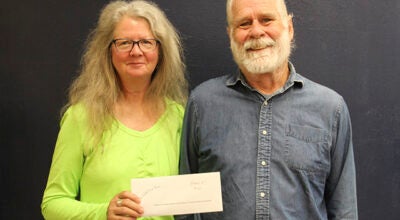School grant funding allows new opportunities for students
Published 6:11 am Tuesday, March 21, 2023
|
Getting your Trinity Audio player ready...
|
Scott Hanna, environmental learning center experiential education coordinator for the Albert Lea school district, gave an update to board members Monday on what the district’s Elementary and Secondary School Emergency Relief funds were being used for, specifically a program called Project Exploration.
The district can use the funds acquired through the grant to give students opportunities to try things outside of normal school hours.
“I was tasked with coordinating some things, so we set up some programming with the goal of having 36 kids at an elementary school each day after school,” Hanna said.
Admitting he didn’t know what response would be, he decided to leave registration open.
The smallest number of participants during Project Exploration was 50, while the highest has been in the 90s.
“I keep bringing more staff on,” he said. “We’re currently up to approximately 32.”
He said students were eager to do different things.
Currently, the program, with classes Monday through Thursday, rotates between the elementary schools, and Hanna said Project Exploration is on its third Sibley visit.
There are a variety of classes, and students sign up for their first or second choice. And what started out with leather, cooking, yoga, Legos and games has now expanded and added others, including a gym class. He’s looking to add more.
“We have a wide variety of classes that the kids can participate in, and we’re essentially trying to develop some of their social skills,” he said, and admitted he was surprised to see students behind on their maturity and development from what he expected.
That said, he believed Project Exploration was helping.
Staff consists primarily of Community Education and district employees, and Hanna said he did that because he already had backgrounds on everybody and could simply coordinate with them.
“The staff are phenomenal,” he said. “The support that we’ve gotten from the entire system has been amazing.”
Hanna will typically receive a list of students participating on a Thursday and spends hours sorting the kids into classes. He’ll then bring it back to administration, who will type up the list and have it ready by Monday morning, just in time for classes to start that afternoon.
He’s hoping the program will provide 3,200 child-impact opportunities before school lets out this year, and said that number was a conservative estimate.
“Last week we had over 200 kids sign up for a collaborative effort between the Y, the city arena and Community Ed where they [could] do rock climbing, ice skating and swimming all in the same day,” he said.
Hanna also said he thought ESSER funds provided students opportunities to do things they would otherwise not have the opportunity to do, and said it was successful.
By comparison, it took him years to get 3,000 people to the boathouse.
“I have a lot of years in management, and I had no right to expect this many participants, this much support, with this high of quality of staff all coming together at the same time,” he said.
Hanna is planning programs for the summer and next fall.
Currently, a major challenge is the disparity in the demographic’s financial capabilities of doing things, and he said use of the program was similar amongst all schools.
Hanna noted it was difficult to get transportation for students whose families didn’t have a second form of reliable transportation.
To deal with that, he said future programming will happen at different schools.
“We really need to give every child in Albert Lea as much of a balanced opportunity as we can,” he said. “It’s not easy to do, but this program is giving us some opportunities to do things that we normally wouldn’t be able to.”
He asks his staff to be flexible with their work, and said if they couldn’t move to something the children needed and didn’t know how team dynamics worked, potential employees wouldn’t want to work with him.
“I’m very straightforward with everybody,” he said. “This is how we need to do this to be successful, and if it doesn’t fit into how you like to operate, then you don’t work with me.”
He also wasn’t hiring people looking for a second job.
Instead, he wanted people who wanted to help the community, like working with kids and enjoyed getting paid to have fun.
Anyone interested in working with Hanna needed to be an employee of either the district or Community Education.
“If I have an instructor coming in and saying, ‘I’m really interested in doing this,’ and I think that they’re a good asset to us, then I will say, ‘I need you to apply for a Community Ed position, and then we’ll run a background check on you, and if you fall into the parameters of my expectations then we’ll bring you in,’” he said.
Following the public portion of the meeting, the board went into executive session to receive confidential legal advice, pursuant to attorney-client privileges, regarding threatened litigation by a student.





